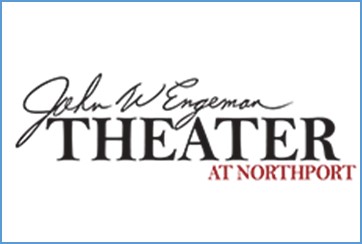Then And Now: A Stroll Through Huntington
/By Bridget Downes
info@longislandergroup.com
This edition of the “Then and Now” photo series showcases archived and contemporary photos Huntington’s most-iconic landmarks. This is a visual approach to compare original buildings and structures to what stands in their places today. The archived photos were obtained through the Huntington Historical Society, which is housed by the former Sewing and Trade School at 209 Main St. in Huntington.
THEN: The Long Islander office
NOW: Rosa’s Pizza
The original Long-Islander newspaper was founded in 1838 by American poet Walt Whitman. As a household name, it provides weekly local news to Huntington residents. A former office building of The Long-Islander in the 1800s stood at 313 Main St., left, and is currently occupied by Rosa’s Pizza, right.
Today, Long Islander News consists of three publications. The first, The Long-Islander, covers Huntington, Huntington Station, Greenlawn, Centerport, Huntington Bay, Cold Spring Harbor and Lloyd Harbor. The second, The Record, covers Northport, East Northport, Elwood, Asharoken, Eatons Neck, Commack and Fort Salonga. The third, the Half Hollow Hills Newspaper, covers Dix Hills, Melville and Wheatley Heights.
THEN: Huntington Methodist Church
NOW: Huntington Methodist Church
Methodists have been present in Huntington since 1806. Peter Hill formed the original class of Methodists in Huntington, and meetings were held in residents’ homes until 1829 since they did not yet have a church.
A lecture room was later built in 1837 on Park Avenue, not pictured. This building was then sold to the Bethel African Methodist Episcopal Church in 1844.
Five years after the lecture room was built, a Methodist Church was built on Main Street in Cold Spring Harbor, pictured in the archive photo. The building was torn down in 1863.
In 1952, the congregation that had inhabited the demolished building bought 3 acres on West Neck Road and Tanyard Lane for $12,000. Three years later the cornerstone was laid for the building, which stands today and is pictured in the contemporary photo.
The first service in the new church was held on Sept. 8, 1957. In 1975, the Community Methodist Church in Cold Spring Harbor merged with the United Methodist Church in Huntington, and the two have been jointly worshipping since Dec. 8, 1975.
THEN: Soldiers and Sailors Memorial and Old Town Hall
NOW: Soldiers and Sailors Memorial and Old Town Hall
After the Civil War, the people of Huntington wanted to create a memorial for the 39 residents who had died during the war. With that, the town’s veterans and a group of citizens founded the Soldiers and Sailors Memorial Association in 1886. The Soldiers and Sailors building was designed by the famous New York City-firm Cady, Berg and See, and was completed in 1892 after fundraising efforts raised enough money for construction.
The Soldiers and Sailors building served as the Huntington town library until 1958 when it moved to its current location down the street at 338 Main St. After that, the building was used by different organizations, and then by the town historian in 1969.
With the passage of time, the Soldiers and Sailors building began to deteriorate until the Huntington Historical Society acquired it in 2000, beginning an eight-year-long restoration process.
The cannon located in front of the building was a gift to the town from the federal government in honor of Huntington’s 250th anniversary in 1903.
Old Town Hall, located across the street from the building, sits on the northeast corner of Main Street and Stewart Avenue, across from Fort Golgotha and the Old Burial Hill Cemetery. It was added to the National Register of Historic Places in 1985.
THEN: St. John’s Episcopal Church
NOW: St. John’s Episcopal Church
St. John’s Episcopal Church was founded in 1745 by Samuel Seabury, who later became the first bishop of the church. The church, which stands at 12 Prospect St., is part of the Episcopal Diocese of Long Island and the worldwide Anglican Communion, whose roots can be traced back to the See of Canterbury in the Church of England.
Around the time of the church’s founding, New England was in an unstable state due to the groups of people who traveled there from England, including puritans and separatists. These people were highly influenced by the continental reformers John Calvin and Huldrych Zwingli. At the time, Bishops not only held pastoral office positions, government ones as well.
THEN: Sewing Trade School
NOW: Huntington Historical Society
Similar to the Soldiers and Sailors Memorial, the Sewing and Trade School was also designed by the firm of Cady, Berg and See. It exemplifies the Tudor Revival style of architecture.
Built in 1905, the building used to serve as a school where young men were taught various trades, and women were taught housekeeping skills such as sewing. The school was one of the first vocational schools in the United States.
In 1982, the Huntington Historical Society bought the building. These days, the top floor hosts the administrative offices while the main floor and lower level host the library resource center and archives.
















